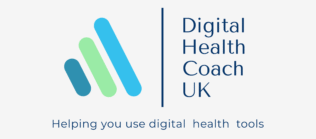As remote healthcare technologies continue to grow in popularity, blood pressure monitors have become a standard tool for people looking to manage their health from the comfort of their homes. This shift offers significant benefits—convenience, control, and peace of mind—but questions remain about whether these devices truly improve health outcomes. A recent report sheds light on people’s experiences and challenges when using blood pressure monitors at home, offering valuable insights into how healthcare providers can better support remote monitoring.
Health Watch – established under the Health and Social Care Act 2012 to understand the needs, experiences and concerns of people who use health and social care services and to speak out on their behalf – issued this report in April 2022 on the public’s experiences of monitoring blood pressure at home.
The report aimed to evaluate the NHS BP@Home programme so that patients’ experiences could be understood and measured, with a view to making recommendations for the wider rollout of BP@Home by the NHS.
The Rise of Home Blood Pressure Monitoring
More and more people are turning to blood pressure monitors for various reasons. Some are prompted by healthcare professionals, while others take matters into their own hands, driven by concerns about family history or the desire to proactively manage their well-being. According to the report, half of the respondents used a blood pressure monitor because they fell into high-risk categories, such as older age or existing health conditions like hypertension.
Interestingly, the report also notes that many people use monitors not because of direct medical advice, but because of personal interest in staying healthy. This reflects a growing trend of individuals taking more responsibility for their health.
The Challenges of Monitoring at Home
While most respondents found blood pressure monitors easy to use, many faced difficulties when it came to submitting their readings to healthcare providers. Only about 60% found it easy to submit readings, with a worrying 25% stating they weren’t even asked to submit readings by their GPs. This is concerning, as regular monitoring and feedback are crucial for effective health management.
Moreover, 33% of users said they were not clearly told what happens to their readings once submitted. This lack of communication can lead to frustration, anxiety, and even demotivation, as people feel like they’re “sending their data into a black hole” without knowing if their results are being reviewed.
Emotional Reactions to Monitoring
The report also explores the emotional side of home blood pressure monitoring. While many people reported feeling empowered and safer, a significant portion experienced negative emotions like anxiety and confusion. Much of this negativity could be addressed with better guidance and more proactive communication from healthcare providers. Patients want to know how to use the devices, what their readings mean, and how to act on them.
The Need for Better Support
The report identifies several areas where healthcare systems, particularly the NHS, could improve patient support using home blood pressure monitors. These include:
-
Providing clear information about blood pressure, managing it, and when to seek help.
-
Offering better guidance on submitting readings and ensuring that patients know their readings are being reviewed.
-
Improving digital solutions for submitting readings, such as user-friendly apps or websites, to make the process smoother and more efficient.
The study also highlights the importance of feedback from healthcare providers. Patients must feel reassured that their readings are being checked, even if the results are normal. Knowing that someone is paying attention to their health can motivate them to continue monitoring and take necessary actions to stay healthy.
Looking Ahead: Digital Solutions and Personal Responsibility
One promising finding from the report is that nearly three-quarters of respondents are open to using digital platforms, such as apps or websites, to submit their readings. This shows a willingness among the public to embrace digital health solutions, provided they are easy to use and accessible. However, it’s also clear that any move toward more digital processes must be inclusive, ensuring that those without access to technology are not left behind.
The report concludes that for home monitoring to benefit public health truly, there needs to be a better partnership between patients and healthcare providers. Patients are willing to take more responsibility for their health but need the right tools, guidance, and support to do so effectively. By improving the systems and processes around remote monitoring, healthcare providers can help ensure that home blood pressure monitoring becomes a valuable tool for long-term health management.
Final Thoughts
Home blood pressure monitoring offers a convenient and empowering way for people to manage their health, but the process is far from perfect. With better communication, improved digital tools, and a more proactive approach from healthcare providers, the full potential of home monitoring can be realized—helping people stay informed and healthy.

